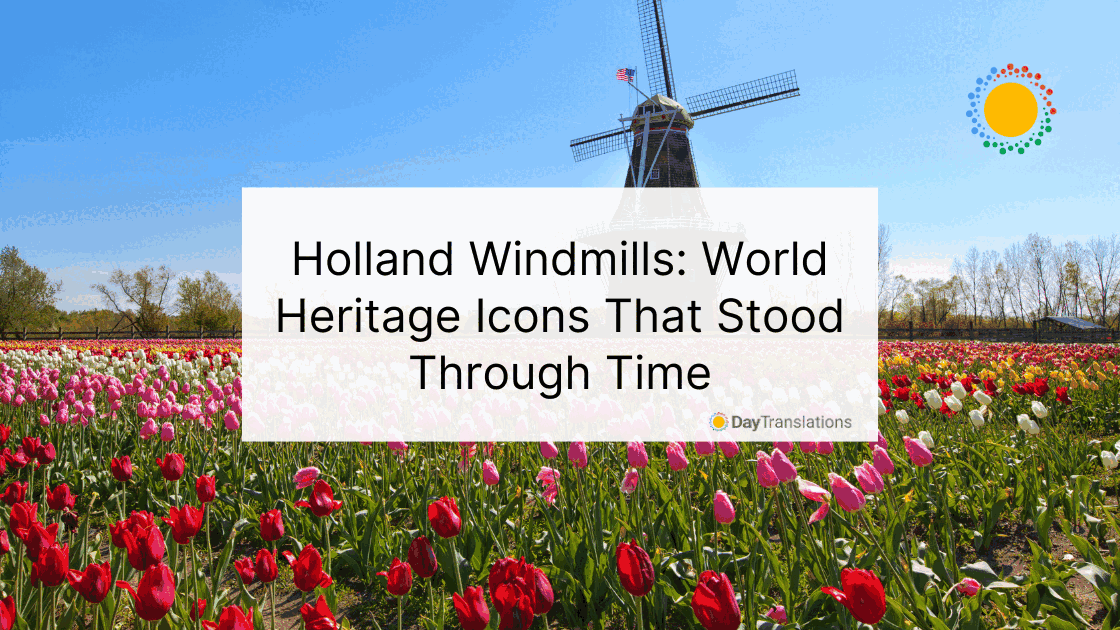Why is Holland always associated with windmills? Why do windmills in the scenery background often symbolize Dutch landscape? Certainly, these questions may have crossed one’s mind. It makes one curious that images of windmills, no matter where they are located, evoke the thought of Holland, which is amusing since the windmill was actually not a Dutch invention.
Picturesque Site
Visiting Dutch land gives varied illuminating experiences. Holland for one is a spectacular place for those wanting to have a change in scenery. Its picturesque countryside and equally gorgeous towns are a sight to relish even after a traveler has long left the place. The serene surrounding is enthralling. Despite its having an unstable coastal condition due to frequent threats of flooding, Holland survives with its scenic windmills standing proud to have served their purpose through the centuries. And that is what Holland gives to everyone – a visual treat of its iconic windmills, also called “grondzeilers” or ground sailer because the sails almost touch the groundWorld Heritage icon
The ideal place to find a good concentration of Dutch windmills is in the village of Kinderdijk. The power vanes of the 19 windmills situated in this town are still functional and well despite being old – they were put up between 1500 and 1740. Windmill lovers will be pleased to know that in 1997, the UNESCO included Kinderdijk in the list of World Heritage Sites due to its windmills. There are ancient windmills in other parts of Holland and Netherlands and even in other nations like Germany but it is only in Kinderdijk where numerous operational mills built in the early centuries can be found.
First windmills
The Greeks and Persians are believed to be the first to have invented windmills. Historians say that sometime in 222 to 285 BC, a Greek named Tesibius was the first who conducted an experiment on the idea of utilizing the wind to run a mill. During those times, water was more widely used in operating mills and other machines. In 700 BC, the Persians started to use windmills for grinding grain however the mills were fixed and would not turn by themselves. The vanes just followed the direction of the breeze.
Original use
Dutch windmills were built originally to pump the water out from the land because the Netherlands is so flat and below sea level. With the land always getting flooded, farming was almost impossible, hence the need to force out the water by means of the windmills. Later on the mills were used for more purposes such as for grinding things and cutting wood. There were thousands of windmills built in various locations in the Netherlands and many of them are still around although only a few remain to be in good form.
Reason for the fame
So why have the Dutch windmills become so famous, creating a general impression that windmills exist only in the Netherlands? There are more images that can be associated with this place such as its vast fields of tulips, creamy cheese and the people’s unique culture, yet the windmills stood out. The reason for the Dutch windmills’ fame could perhaps be attributed to Cornelis Corneliszoon van Uitgeest who lived from 1550 to 1607. He introduced people to other uses of the windmill such as wood sawing at high speed. It was then that the Dutch East India Company started to explore the East Indies and there was a great need for wood to be used in building ships. The Dutch windmills were put to massive utility in producing tons of wood each year. Thus they rose to prominence and became indisputable icons of this land below the sea.














Sorry, the comment form is closed at this time.